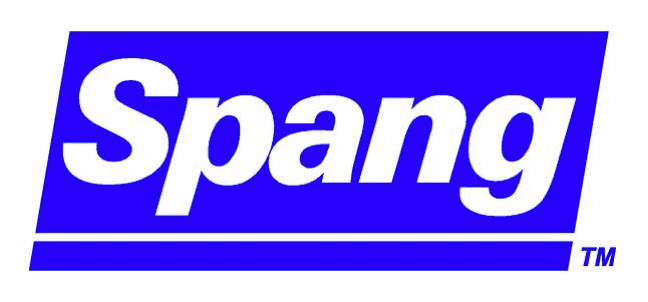Azure Files Accelerates Critical Processes

Founded in 1894, Spang Company is a diversified manufacturing company. Through the work of three unique product lines, the design, produce, and supply of precision soft magnetic components and materials to the electronics industry and custom engineered solutions to the power industry. With headquarters in Pittsburgh, Pennsylvania, Spang Company provides products and services on a worldwide scale, with sales offices and manufacturing plants around the globe. Their divisions include Magnetics, a leading supplier of precision soft magnetic components, Spang Engineered Solutions, which offers custom inductive components in an array of industries, and Spang Power Electronics, which designs and manufactures a full line of power control equipment for highly critical industrial processes. They currently have locations in Pennsylvania, Ohio, Arizona, California, China, and Hong Kong.

Pittsburgh
PENNSYLVANIA
3
MANUFACTURING DIVISIONS
1984
FOUNDED
Globalization Brings Performance Challenges
As the IT VP of the global manufacturing firm, Brian Buddemeyer had for years been trying to deliver fast, reliable, file sync between Spang’s US and Chinese operations.
“As we became more global with manufacturing in China and design and engineering at headquarters, that created some issues deciding wherein a wide area network we should locate folders and data that folks need to do their jobs for optimum performance.”
The team tried several other options before Azure Files, but with dissatisfactory results:
1. DFS (Distributed File System) replication. “We were a n edge case for DFS replication because we had, as it turns out, people on both sides trying to edit the same things at the same time . We had more issues than I care to remember around version conflicts and people doing work and finding that it had disappeared on them.”
2. A global DFS namespace and an arrangement of the folders for geographic performance. “It got to the point where picking one side of the transaction to have good performance and one side of the transaction to have bad performance wasn’t working anymore.”
3. A third-party WAN optimization solution. “It was great when it was up and running , but jobs would more frequently than we would like just die for no reason, and the tech support answer was to just rebuild the whole pre-population job set and environment.”
It’s no wonder Buddemeyer was excited about Azure Files, the cloud service that provides fully managed file shares using the industry-standard Server Message Block (SMB) and Network File System (NFS) protocols.
Cohesive Business Benefits
Security Not a Concern
Spang’s experience with using other Microsoft cloud technologies gave them the comfort to move their proprietary engineering drawings into Azure.
“There really weren’t organizational concerns,” Brian stated. “We've been in the Microsoft 365 environment for a number of years, so we were passed a lot of the general initial worries about moving things into a public cloud environment.”
The familiarity of Azure Files was helpful, too. “We could speak about this environment in terms that everyone already understands” he explained. “It’s the same user access and permissions rights that everyone is used to. Our Azure Files are not exposed to the Internet. It’s accessed over a VPN, which is how we’ve linked our sites for as long as I’ve been around.”
Seamless User Experience
The user experience is exactly as it had been, only faster. “Azure Files has been preserving everything about old traditional SMB resources that our users like,” explained Buddemeyer. “We can still go through File Explorer and navigate our folder structure, we do not lose losing permissions, were not losing security.”
Unlike with major user changes like Teams, “This was a process and a migration that really didn’t require a whole lot of coordination or disruption,” Brian said. “The vast majority of the user base probably still doesn’t know anything has changed, but the users who are passing files back and forth between the US and Asia have said the experience is now what it always should have been.”
“I was very happy to see that Microsoft came out with Azure Files . It looked to do the simple-sounding thing of making these traditional SMB resources available with performance across our environment,” said Buddemeyer.
Business Benefits
Velocity in the cloud is often an overused term, but for Spang, it’s a reality. “The overall business improvements have been that we’ve sped up some critical processes. The folks in China who are building some of our larger, more complicated systems are able to get work done faster. They’re able to get feedback on questions they have or design changes or divergences they’ve had to make from their prints faster. They don’t have to wait overnight or go get coffee, or work on something else while a couple 100 megs of pictures upload. They can just do their work and get on with whatever is next without having to wait for the network. That’s been the biggest benefit.”
Improved Productivity for IT
Buddemeyer’s team was randomly interrupted by issues with the prior technologies being used. “When we’d reactively get a complaint that performance was poor or that optimization wasn’t working, it was just really, really, disruptive. With our limited resources, it impacted our ability to do things that would move the organization forward.”
After some initial growing pains getting to know how Azure Files operates, Brian shared,
“We're back to a fairly set it and forget it SMB traditional file share service, and that's a nice place to be!”
The Only Surprise was a Pleasant one
Buddemeyer advises working with an expert to conduct a proof of concept . “We had a little bit of Azure knowledge in-house, but Azure Files was a service we haven’t touched. We didn’t have a lot of experience with the networking aspects, so to implement this solution globally, we brought eGroup Enabling Technologies to do a proof of concept.
eGroup Enabling Technologies helped Spang make important decisions about what would work best in the environment. “The folks we were working with at eGroup Enabling Technologies were clearly experienced in Azure and file shares and had done this before,” said Buddemeyer.
“The only surprise was that the actual backend architecture that we had in mind was not the way we wound up going once we tried a couple of things out in the field ,” Brian explained. “ I thought we would actually be replicating our master data across a couple of Azure data centers to get the performance we needed in both the US and Asia . But we found that building a VPN tunnel from our Asian facilities to Azure really was enough to overcome any issues we had with access speed. That was a much simpler and more cost–effective way to meet our performance needs. ”
Spang’s Experience with US
“I've really enjoyed working with eGroup Enabling Technologies. The engineers on this project and a couple of other projects we've done ” stated Buddemeyer. “They have all been top-notch. The design, the management, the flow of the project is as good as anyone I've ever worked with. I'm just getting to a point where I'm more and more trust eGroup Enabling Technologies and plan to look to them first as I have new complicated initiatives on the horizon .”
Contact Our Team of Experts Today!
Interested in how our team can provide you with the IT Services you need around the products and solutions you’ve acquired?
Contact our team to learn more.

